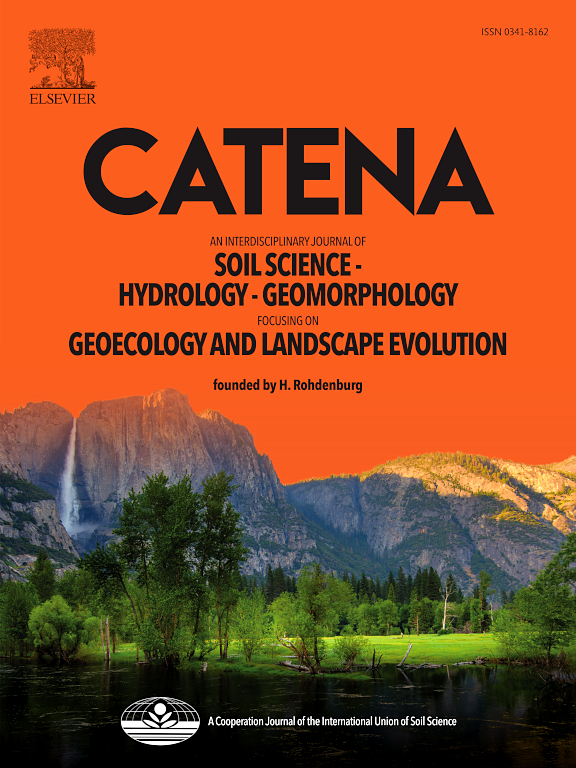The spatial and temporal distribution of freeze–thaw characteristics of near-surface soil in the Northeast of China and its influencing factors
IF 5.4
1区 农林科学
Q1 GEOSCIENCES, MULTIDISCIPLINARY
引用次数: 0
Abstract
The Northeast region of China is located in mid-latitudes, characterized by large annual and diurnal temperature variations. This climatic characteristic creates conditions for frequent freeze-thawing erosion during the autumn freezing period and spring thawing period. An analysis of the freeze–thaw alternation process near the surface soil was conducted firstly. Based on this analysis, freeze–thaw frequency, intensity, temperature difference, and average soil moisture were calculated by utilizing reanalysis data of near-surface soil temperature, soil moisture, and daily maximum/minimum temperatures from 1990 to 2020, along with land use data for four periods. Sen’s slope and partial correlation coefficient methods were employed to determine spatial trends and correlations. The research results indicated that in the Northeast region, the annual intensity and frequency of near-surface soil freeze–thaw in the western region were significantly higher than those in the eastern region at the same latitude. Thawing frequency (5–50 cycles) was higher than freezing period (5–30 cycles), while freeze–thaw intensity during the freezing period (7–40 °C) was higher than the thawing period (2–40 °C). Regarding the correlation between freeze–thaw characteristics and driving factors, the partial correlation coefficients of freeze–thaw frequency and intensity with temperature difference were mainly positive, while the negative partial correlation coefficients with soil moisture were mostly distributed in regions with high or low soil moisture values. Among the seven main land use types in the study area, the magnitude of freeze–thaw frequency was as follows: water area > unutilized land > grass land > dry fields > paddy fields > marshy land > forest land, and the magnitude of freeze–thaw intensity was as follows: unutilized land > grass land > water area > dry fields > marshy land > paddy fields > forest land. These results are of significant importance for understanding the characteristics and changes of soil freeze–thaw in the Northeast region.
求助全文
约1分钟内获得全文
求助全文
来源期刊

Catena
环境科学-地球科学综合
CiteScore
10.50
自引率
9.70%
发文量
816
审稿时长
54 days
期刊介绍:
Catena publishes papers describing original field and laboratory investigations and reviews on geoecology and landscape evolution with emphasis on interdisciplinary aspects of soil science, hydrology and geomorphology. It aims to disseminate new knowledge and foster better understanding of the physical environment, of evolutionary sequences that have resulted in past and current landscapes, and of the natural processes that are likely to determine the fate of our terrestrial environment.
Papers within any one of the above topics are welcome provided they are of sufficiently wide interest and relevance.
 求助内容:
求助内容: 应助结果提醒方式:
应助结果提醒方式:


